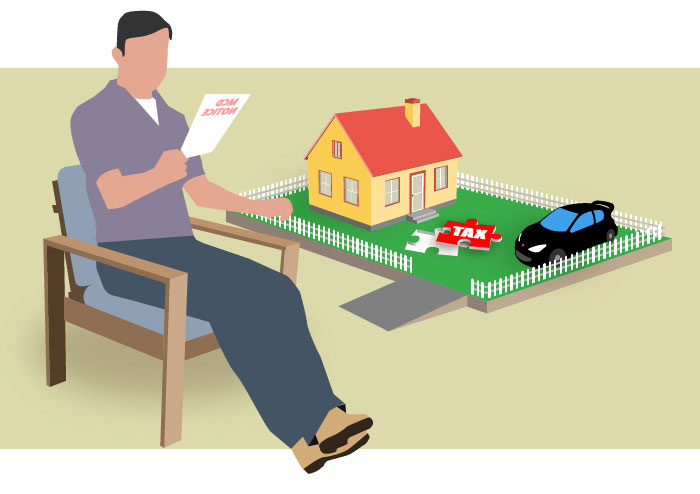Property tax is one of the major sources of revenue generation for the local municipal authorities in the urban city to maintain the basic level of services. Administration of MCD property tax is liable under the municipalities bodies of the state, and the property owners of Delhi have to pay the yearly taxes to Municipal corporation of Delhi (MCD). The Municipality of Delhi is therefore responsible for the collection & management of the taxes liable on the properties in the state.
According to the studies, a decline in the mcd property tax 2018 – 19 has been recorded due to less access to the complete information, lack of administration and inefficiency in the overall procedure. As a result, MCD plan to utilize information technology to provide efficient, answerable and transparent services for the Delhites in favour of them may be expressed as the citizen-centric services. MCD has started a broader initiative with a wider approach known as the Public-Private Partnership.
Although every building and vacant land falls under the regime of property tax for MCD. But on a broader perspective, MCD levies taxes on the basis of the Unit Area System recommended by the Indian government. While calculating the taxes under the unit area system, following things are taken into consideration:
- Construction Period
- Building Structure
- Property Location
and the usage of the property whether it is for residential purpose, rented, commercial or industrial property. The house tax varies with the usage of the property and is computed accordingly.
In Delhi, Municipality Corporation of Delhi is broadly divided into 3 sections.
North Delhi Municipal Corporation– including Pitampura, Karol Bagh, Sadar Paharganj, Civil Lines, Narela, Rohini
East Delhi Municipal Corporation– including Shahdara North & Shahdara South
South Delhi Municipal Corporation– including Central Delhi, South Delhi, West Delhi, Najafgarh.
Furthermore, Delhi is categorized into 8 wide categories on the basis of property value from A to H.
Computation of MCD property tax 2019 -20
Property Tax = Yearly Value X Rate of tax
Yearly Value for building can be achieved from the following:
Unit area value per square meter X Age factor X Occupancy factor X Use factor X covered area of the property X Structure factor
Further Explanation:
- Unit area value of per square meter is the value of the developed area per square meter of the property in respect to the belonging category.
- 0.5-1 (the range of the age of the property). The new building has to pay high taxes as compared to the previously built building.
- Occupancy factors in simple terms can be stated the property rights of any particular property/ building/ house, whether it is owned or rented.
- Use factor is decided by the MCD on the basis of the usage.
- The covered area constitutes each and every part of the property including the total floor area with the walls, balcony, garage, staircase, backyard, courtyard etc. and any other is beyond the property plot which is projected.
- Structure factor illustrates the type of building construction
The yearly value for the unoccupied land is calculated by the following formula:
Unit Area value per square meter. X area of the unoccupied land X Use factor X occupancy factor X 0.3
Unit Area calculation system is a simple calculation of the yearly value of the covered/ unoccupied area of the building by the rate of per unit based on the category of the property/ land.
In short, the municipal tax in the state, Delhi, is the tax rate multiplied by the overall property value after considering all the above-mentioned factors.
Municipal Valuation Committee is appointed by the Delhi Government to categories the colonies as per the residents, unit rate & the other calculation factors. MCD house tax and stamp duty on property are also determined by the Municipal Valuation Committee.
If the building is constructed in different stages or the different segment of the building is used for a different purpose then the yearly tax is calculated separately for each segment.
Penalty, Due Date & Rewards
- 15% Rebate is observed in the entire property tax when paid in 1 Lump Sum before the first quarter.
- 1% of interest is imposed as a penalty every month if any delay in the taxes is observed.
Payment of Property Tax Online
Online Payment
There is a simple method to pay the online tax by using the allotted property ID
Steps:
- Check on the official government site and select your zone (South, North or East), where you need to pay the tax
- Tick the box and agree to the terms and conditions and follow the instruction to file the tax
- Enter the property tax ID for the year, and click on submit
- You can get the property ID from previously filed tax report or check it on the official website
- After that, you will be guided to a link with the ownership details
- Now you can enter the required property details and compute the tax automatically and then click on submit
- The website supports multiple payment options like credit/ debit and net banking. You can pay by any suitable option
- Now to get the official challan you have to click on the button, ‘generate challan’. The system will automatically generate a challan that will be displayed, and you can download it also
The mcd property tax online also calculates any penalties, delays, property tax arrears, late and interest amounts, and generates the challan accordingly.
MCD Offline Property Tax Payment
MCD has made this even simpler to file property tax offline. You need to visit any ITZ cash counter in Delhi and pay the tax. Instant receipt with property tax ID is issued after the payment from the counter.
The Exemptions from Property Tax
The variations in the property tax exemptions & concessions depend on the section it belongs to (North, South or East MCD) are stated below:









